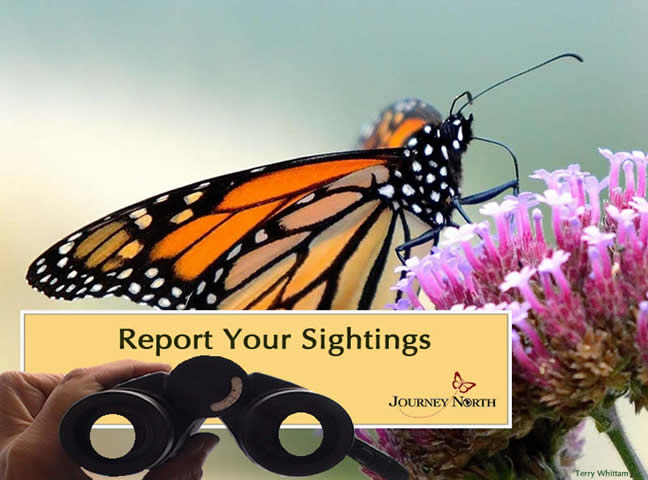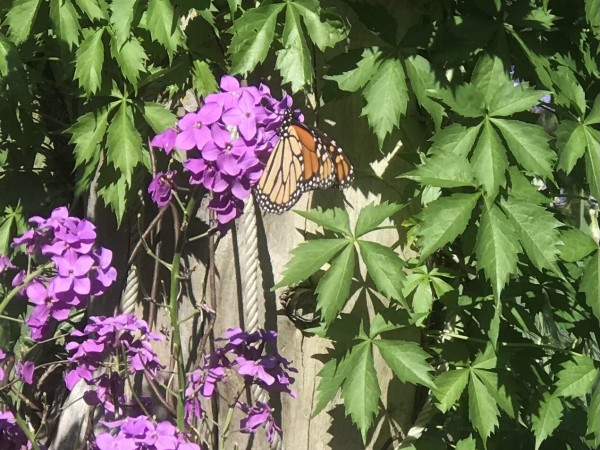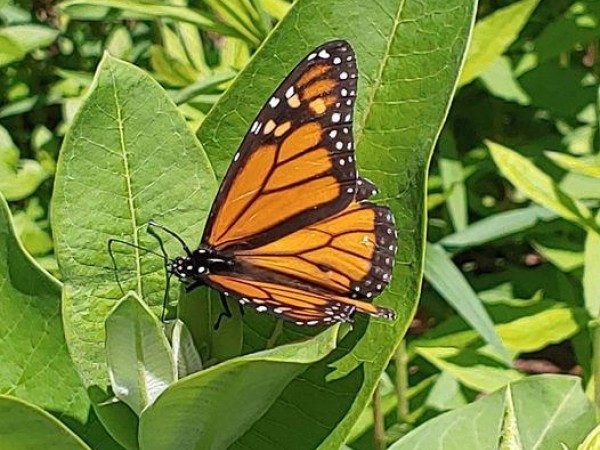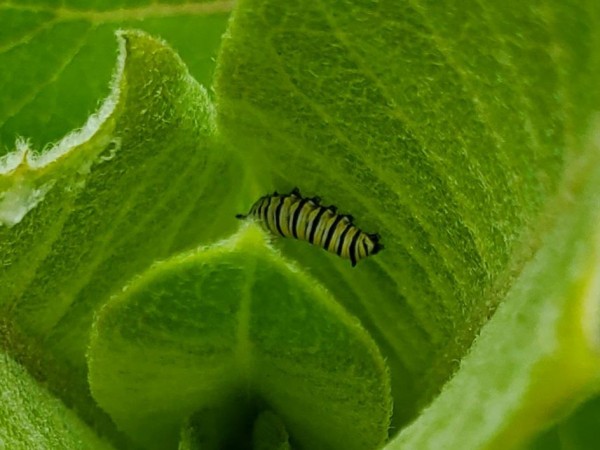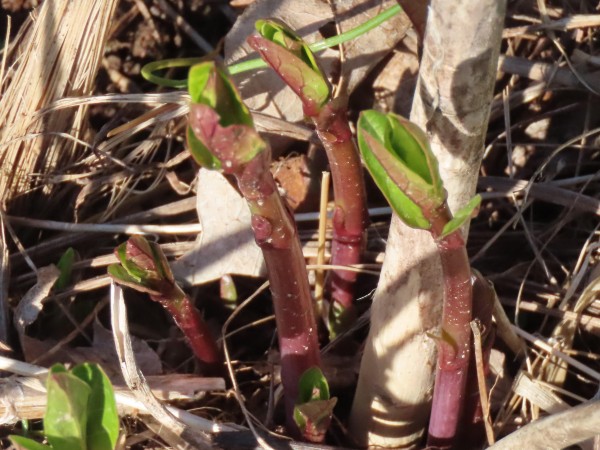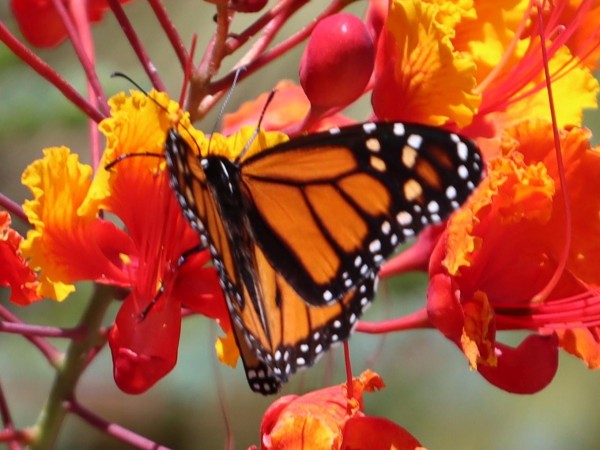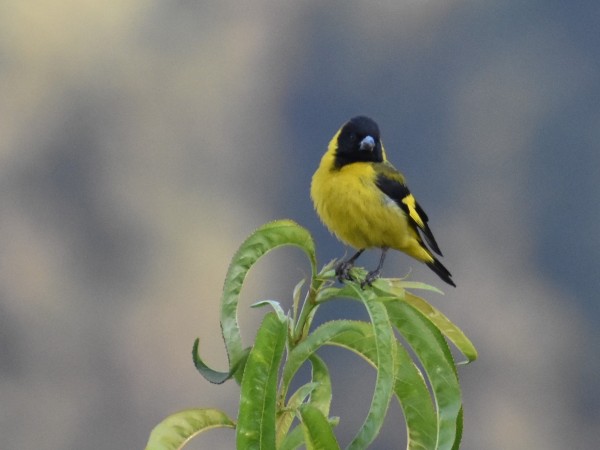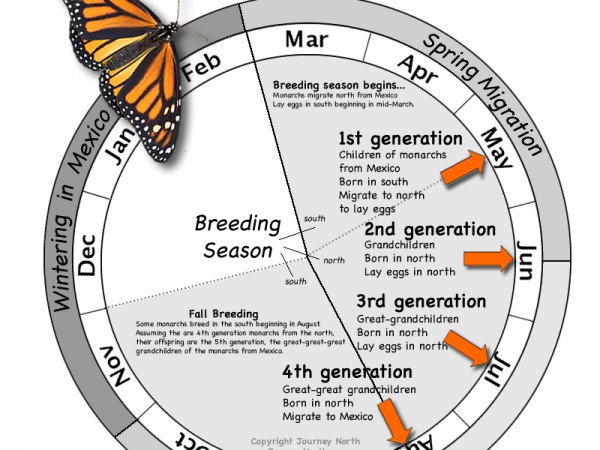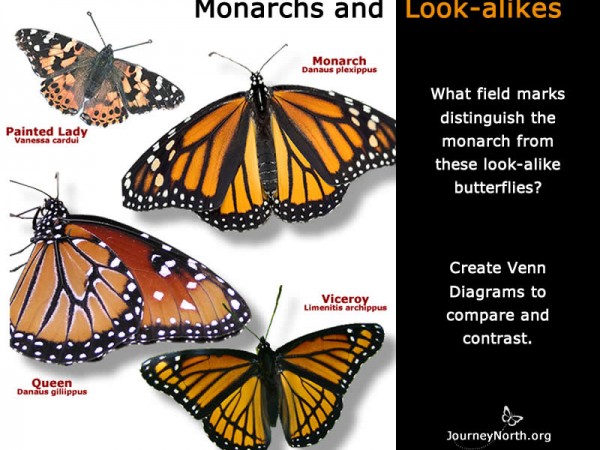Holding Steady
Eastern Monarch Population
Migrating Monarchs
The leading edge of monarch of migration line has stalled with little progress north since last week. In the Midwest, the majority of reports are still clustered in Kansas, Missouri, and southern Illinois, Indiana, and Ohio. There are a few isolated reports farther north. In the eastern US, sightings are largely concentrated in the Mid-Atlantic states such as Virginia, Maryland, Pennsylvania and New Jersey
Warmer temperatures and favorable winds are in the forecast. Reports from previous years show a pattern with a typical surge occurring during the second half of May. With more first spring generation monarchs now on the wing, keep cameras at the ready to capture this potential migration surge. Keep an eye on the wind and temperature map as well.
Andrea in Hampton, NJ: "Female [Monarch Butterfly] - very tattered, laying eggs on milkweed plants that have just started coming up." (05/07/2021)
Mary in Derby, KS: "[Monarch Butterfly] feeding on Dame’s Rocket...there are Common milkweed, Butterfly milkweed, & tiny surviving Showy milkweed nearby. A tuberosa at feet of Dame’s Rocket, Common about twenty feet away. Also on Dame’s Rocket were first Red Admiral and first Painted Lady." (05/08/2021)
Amelia in Woodbridge, VA: "Adult male [Monarch Butterfly] visiting milkweed in my garden." (05/11/2021)
Eggs, Larvae, and Milkweed
Monarch eggs are not far behind the leading edge of migration. Some Journey North volunteers are noting how early it is to find eggs.
Amy in Champaign, IL: "My 4-6 inch high swamp milkweed got egg bombed today. One plant had at least 4 eggs on it. Very exciting!" (05/05/2021)
Debra in Newark, DE: "I found these two beauties [monarch eggs] on young milkweed near my house. It’s the earliest I have ever found eggs." (05/06/2021)
Slightly behind monarch adults and eggs, larvae are being reported as far north as latitudes 37-39°N.
Lauren in Pasadena, MD: "Found nine second instars on A. syriaca." (05/09/2021)
Roger in Farmington, MO: "Tiny larvae. About 3/16 inch. On common milkweed." (05/11/2021)
The milkweed emergence line has crossed the Canadian border. There have been reports of milkweed now in Manitoba, Ontario, Quebec and Nova Scotia.
Connie in Hebbville, NS: "Milkweed is beginning to sprout in the gardens." (05/11/2021)
Western Monarch Population
Letter from Gail Morris: Western Monarch Spring Report #11
Out West, monarch migration has picked up after last week's slow pace. Monarchs are now being reported in Utah, and numbers are increasing in California and Arizona. Gail writes, "Monarchs are on the move in the West with a giant leap for monarchs this week into Utah! Monarchs are on their way with summer right around the corner to their seasonal breeding grounds. Meanwhile, they expanded their numbers and sightings were more numerous in California as warmer temperatures set in. Arizona saw an uptick in monarch movement too."
Read more of Gail Morris’ Letter: Western Monarch Spring Report #11»
Keep Reporting and Include Photos!
The second half of May is a busy period of monarch migration. Be on the lookout and report your observations to Journey North. If possible, please include photos and ensure your photo is properly rotated. Photos help verify reports and we enjoy sharing them with our Journey North community!
Letter from Ana Moreno: Learning About the Birds of Macheros and Cerro Pelón
Cerro Pelon Monarch Butterfly Sanctuary provides critical habitat for monarch butterflies overwintering in Mexico. But it’s also an important refuge for birds, including many of the migratory species currently moving through the US and Canada. Ana Moreno, a guide for JM Butterfly B&B and Journey North contributor, was kind enough to detail some of birds found in Cerro Pelon and the village of Macheros. She also highlights a birding workshop that helped participants identify different species of the area.
“During the three days of the course, we were able to spot around 50 different bird species. In the forest we saw the Russet Nightingale-Thrush, Crescent-chested Warbler, Green-striped Brushfinch and a Tufted Flycatcher, among others. In the village, we saw Black-headed Siskins and a Cinnamon-belled Flowerpiercer stealing nectar from the hummingbirds, but without a doubt the species that most caught my attention was the Cedar Waxwing.”


